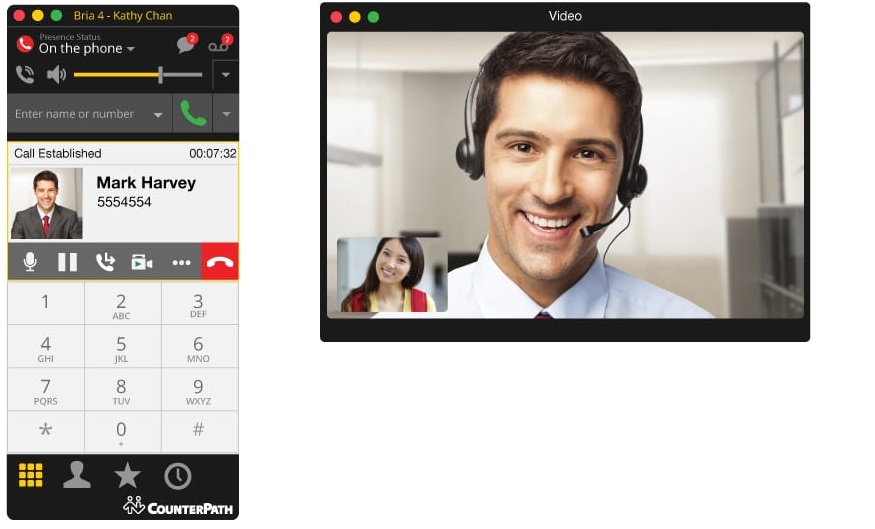
WHAT IS A CATI SURVEY AND WHAT IS ITS RELEVANCE?
Telephone surveys or CATI (Computer Assisted Telephone Interiew) surveys are one of the most useful methods in market research. Either massive telephone surveys are applied to an unknown public, or selective telephone surveys to a known public. This method of survey application requires a call center, which can be as small as one person in a home-office working at a desk with a home phone, or as large as a modern call center with hundreds of operators doing telephone surveys in parallel. Before starting the survey, the operator must read a convincing and suggestive script or verbatim to achieve the collaboration of the interviewee, then he/she will complete a questionnaire consisting of closed questions and some open questions until closing the survey and thanking the respondent for his/her collaboration.
CATI VS. TELEMARKETING SURVEY
It is necessary to differentiate a CATI interview from a TELEMARKETING interview, because they are completely different things, in the CATI interview the purpose of the telephone call is to collect data for research and analysis purposes, while a telemarketing interview has the purpose of offering some good or service to the subscriber, in this second case we would no longer speak of a CATI system, but of a "telemarketing" system. From the point of view of the software, tools and systems used, as well as the application methodology, both techniques, CATI and telemarketing, are identical, but pursue different objectives. In this sense, it is not unreasonable to think that both techniques can be mixed and we can achieve that the telephone operator performs data collection for research purposes and at the same time offers some service or product to the respondent. However, since telemarketing tends to have more rejection than CATI, we must make our purpose clear to the subscriber before starting the survey or we could get a high rejection rate.
TYPES OF TELEPHONE SURVEYS - CATI
The CATI survey typically has two forms of application: ANONYMOUS or NAMED, in the first case the researcher looks for the telephone numbers of an area or territory to be investigated, normally using a directory such as the white or yellow pages of the telephone company and distributes the list of telephone numbers so that the operators proceed with the dialing and conduct the interview to unknown persons. In the second case, we have a database of the people we are going to call, and in addition to their telephone number, we have some personal data such as name, city and other fields that were previously captured or stored during a transaction or subscription. Thus, in the CATI survey method mentioned above, the calls are offered directly by the system and the name of the person (subscriber) and their associated data are presented on the application screen, so that the interview is more fluid and personalized.
THE TELEPHONE SURVEY - CATI NAMED (WITH PARTICIPANT BASE)
A script for a named CATI survey with a participant base might look like this:
"Good morning "Mrs. Ramirez", my name is "Juan"; and I am calling on behalf of Banco República, we would like to ask you some questions regarding the services offered by the bank, the survey will only take you 10 minutes, could you collaborate?"
Note in the verbatim that the system knows in advance the name of the operator and the interviewee, so the interview can flow in a warm and personalized way. Let's look at the first question:
"P1. We see that you have a "savings account"; since the year "2005", we wanted to know how satisfied you are with this account..."
Note how the system knows that the client has had a savings account since 2005. Therefore, in the CATI survey named with Participant Base we know a lot of information about the subject to be investigated, so we can achieve an immediate engagement and a collaboration that in most cases exceeds 90%.
THE ANONYMOUS CATI SURVEY
CATI surveys without a participant base are more anonymous and cold, therefore trained and motivated interviewers are required to achieve respondent collaboration. A verbatim of a CATI survey without participant base can be:
"Good morning, my name is JUAN and I work for CONSULTA 2000, we are a market research company and we are studying the nutritional habits of the Mexican population, do you have 10 minutes to ask you some questions about this topic?"
At this point in the survey it is likely that the subscriber or respondent is busy, so the operator may set an appointment for a later time or for a specific day that you both agree upon.
INCIDENCE MANAGEMENT IN THE CAUTI SURVEY
Another aspect that we find in CATI surveys is the handling of incidences, which are nothing more than the different statuses that the call can take during the process of calls and data collection, the typical incidences that we must document in a CATI survey are:

- Unwilling to cooperate or hung up the phone
- Busy number
- Fax number
- Person does not live or work there
- Wrong number
- Out of service number
- A recorder answers
- The person has speech impairments
- Call postponed to a later (Hour: __________)
- Call postponed to a another date (Day:_________Hour: __________)
Some users of Online surveys, underestimate the specificity of the telephone survey and program an Online survey made with SurveyMonkey or Google Forms to perform the survey simulating a CATI system, and although it is true that it is possible to create in the online survey the question "Incidence" and the questions "Postpone date" and "Postpone time", The problem comes when we have to follow up on these cases, i.e., if the operator begins to make calls through an ONLINE survey (Survey Monkey), and in 30 of the 100 calls has selected the option "Call later", the operator must manually review each call made to find out which appointment is closer to retake the call. Therefore, telephone survey (CATI) systems are specific and handle all these scenarios, applying a CATI system with a customized ONLINE survey is like writing a document in Excel instead of Word, which was designed exactly for that purpose.
ADVANTAGES AND DISADVANTAGES OF THE CAUTI SURVEY
When we compare the CATI survey versus other methods, such as face-to-face interviews (CAPI), we see that the CATI is slightly colder than the face-to-face, but much warmer than the self-administered online survey (CAWI). Therefore, the rejection rate of a CATI survey is lower than that of an ONLINE survey, but higher than a CAPI survey. The refusal rate that we can obtain in a CATI survey can vary depending on the interest of the topic being investigated and on the emotional or practical connection that the respondent has with the object of the study.
Among the advantages of the CATI survey we can mention:
- Fast data collection
- Immediacy of the data analysis, since the data are directly entered into the database.
- Ease of monitoring of operators whether local or remote
- Ease of administering the survey in multiple languages
- Possibility to record interviews
- Lower rejection rate than self-administered online surveys
- Easy to obtain statistics on incidents
- Easy measurement of field equipment productivity
- Less invasive than face-to-face survey
Among the disadvantages of CATI surveys are:
- Higher rejection rate than face-to-face surveys
- Not suitable for long questionnaires, more than 10 questions may not be intolerable for the respondent.
- Cost of calls, especially long distance calls
- It is more invasive than the online survey
PREDICTIVE DIALING VS. MANUAL DIALING
In CATI surveys, when we want to speed up the process, it is useful to have a predictive dialer, the predictive dialer is a software that routes the call either incoming or outgoing to the next available operator, in order to reduce operator idle time and avoid the operator to dial the number manually, thus maximizing the productivity of the operator who should only concentrate on running the interview and completely forget to dial the phone number. To learn more about the use of the predictive dialer in CATI surveys, check out this link: https://en.wikipedia.org/wiki/Predictive_dialer

RECORDING THE VOICE OF THE INTERVIEW
Another fundamental aspect of the CATI survey is the need to record the entire interview. Recording the conversation between the respondent and the operator has several advantages: on the one hand, it allows the supervision of the operator's work, and on the other hand, it allows recovering the data of a call in case there is a loss of data for any reason. Additionally, when presenting the results to the client it is useful to show 3 to 5 recordings with the most important findings of the study.
Here are some links to review the options available to record the voice of telephone surveys - CATI
In conclusion, to conduct a CATI survey you need a specialized system and not a general purpose online survey, as you will lose much of the control of the process. Here are some links to companies that provide specialized tools and specific software for CATI studies or telephone surveys.
- Id Survey Software
- Voxco telephone Systems
- Rotator Survey CATI System
- Online Telephone Interviewing (CATI) Software & Survey Sample Management
- Forsta Phone survey
- Telephone Sample Management (CATI)
- What is CATI Survey: Advantages, Disadvantages, Working & More
- CATI Call Center Software
- Full-Fledged Phone Surveys
- queXS CATI Software
- CATI-WEB Telephone survey system
- Data collection via telephone interview
Belows some videos related to the topic of telephone surveys...